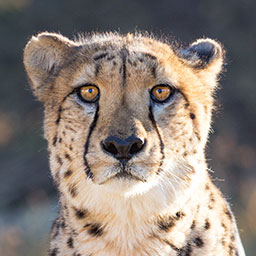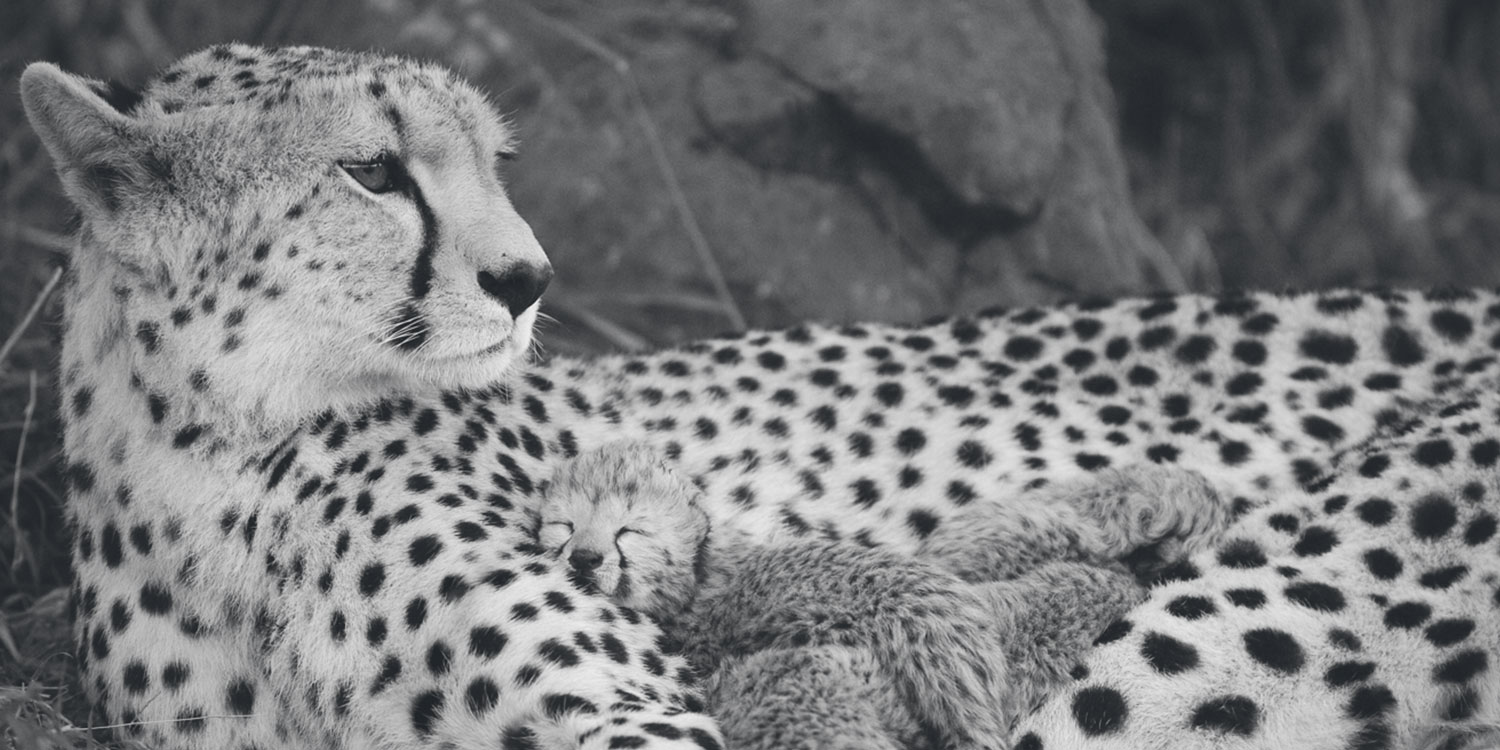Cheetah Conservation Fund Comments on Transfer of Three Orphan Cubs to KWS Facility
-

- by CCF Staff May 16, 2012
PRESS RELEASE: May 16, 2012
Contact:
Dr. Laurie Marker – 264 81124 7887 (Namibia)
Patricia Tricorache – 1-305-766-8229 (USA)
THE CHEETAH CONSERVATION FUND COMMENTS ON TRANSFER OF THREE ORPHAN CUBS TO KWS FACILITY
The Cheetah Conservation Fund (CCF) works to conserve cheetahs in the wild; not in captivity. However, CCF does work with captive facilities as they are important to keep orphans alive. Captive cheetahs that are not deemed suitable for release, like the three Mara orphans, can play a key role in education and also maintain genes. Dr. Laurie Marker, CCF’s Founder and Executive Director expressed that“The Mara cubs are neither the problem nor their release into the wild the solution to cheetah survival; however, they have opened a dialogue on very BIG issues that small teams of cheetah organisations are working on to save cheetahs in the wild.”
We have been following the posts and news regarding the three 2-month old cheetah cubs rescued by the Mara Conservancy two months ago, and are very concerned about their future and about the information that is being published. We therefore urge everyone involved to consider the following:
- Government guidelines are critical. Namibia, where CCF is based, has developed extensive guidelines that discourage all but the most professional in housing and caring for cheetahs. We believe that the transfer of the Mara cubs to a KWS facility was in full compliance with Kenyan laws and national wildlife management plans. NGOs such as ACK or CCF are unable to decide where cheetahs are housed and can only provide advice based on science and the animals’ best interest.
- The cubs are alive because of human intervention. Sadly, but naturally, 90% of cheetah cubs die in the wild before they reach 3 months’ old. This is the way it has been for thousands of years. Competition with other predators is a problem, and yet, cheetahs have survived in the wild until they increasingly began to lose habitat and come in conflict with humans.
Although much is being said about successful re-introductions, it is crucial to note that there are two types of re-introductions that have been alternately mentioned in the various posts and news, but should not be confused. Wild cheetah releases and wild-born, captive cheetah re-wilding.
Wild cheetah releases involve wild-caught animals–perhaps trapped at a livestock farm–and reported to organisations dealing with carnivores. These animals are usually anaesthetised for as brief a period of time so they can be examined to determine whether they are healthy enough to be released. They are only held temporarily (from a few hours to a few days) until they are fit to go back in the wild and human contact is nonexistent once they wake up from anaesthesia. Such is the case of the much-referred to Africat’s releases. Like CCF, we believe that all of the animals Africat has released have been wild, healthy, adult cheetahs or mothers with cubs. Since 1992 CCF has conducted over 600 releases of healthy adult cheetahs or mothers with cubs, most of which had been captured on farms. The only cheetahs that remain under our care are young orphans or injured adults, if and until they show the right traits for potential re-wilding once they are old and healthy enough.
Wild-born, captive cheetah re-wilding: We use the term re-wilding to describe the process of “training” a wild-born cheetah that has lived in captivity, to live in the wild again. CCF has been researching cheetah re-wilding since 2004 and has worked on re-wildling 14 captive but wild-born and healthy adult cheetahs. Our process, which complies with UCN re-introduction guidelines , involves many factors such as identifying the right cats, i.e., with the right disposition, behaviour and attitude, followed by intensive monitoring with supplement feeding and watering as needed, identifying suitable release locations, and engaging the community. Every stage of our work has been a learning experience. The first two cheetahs were returned to captivity after they moved out of the “training” camp and caused problems with a neighbour’s small stock. Of the remaining 12, eight are alive and thriving today, while four died of various causes, including a hyena attack, and two from oryx and ostrich injuries during hunts –all normal occurrences in the wild. It is important to mention that all of these cheetahs had been orphaned no less than 6 months before coming under our care and were healthy adults at the time of their re-introduction.
Although many re-introduction examples have been mentioned, to our knowledge they do not represent documented successful re-wilding of cheetahs orphaned at a very early age. Cheetahs stay with their mothers for up to 20 months, during which time they don’t just learn to hunt, but also the skills that will help them to stay alive in the wild, such as learning who their natural enemies are. Cubs that have not had the benefit of learning skills from their mother are less likely to survive in a natural environment. As I have mentioned before, over 90 percent of wild cheetah cubs are killed by lions or other predators before reaching three months of age. As far as these three young cubs, we believe that their only chance for survival at the age they were captured would have been if they had been taken immediately to another wild mother with cubs of a similar age. Unfortunately this is not always easy to come about.
Some much-mentioned cases involve Honey’s cubs (the famous Big Cat Diary cheetah that died in 2007). Honey’s cubs had the advantage of being wild through their lives, older when orphaned (11 months’ old), and all males, which resulted in their staying together to this date as a powerful coalition and increasing their survival chances. David Drummond’s story, “Queen of the Mara,” features five 9-month old cheetah cubs orphaned when their mother was killed by a lion. Drummond was able to organise supplement feeding for these cubs. In Drummond’s own words, they “became inured to the pressures of tourist game viewing, they even explored the exterior and sometimes mischievously the interior of occupied tourist vehicles, much to the dismay and fear of the occupants.” One female later died. It is not known what happened with the three males. Drummond followed “Petal”, the surviving female, for five years. Her progeny are now believed to be the ones near Governors Camp who to this day are known for leaping onto tourist vehicles. Lewa Downs has raised cubs; unfortunately one was killed by an oryx, one apparently was killed by a herder, another by a lion and the fourth was moved to Ol Pejeta where it remained under constant monitoring until his collar stopped working and has not been sighted again. Joy Adamson’s Pippa, a 7-month old cub given to her after being kept as a pet, never became “wild.” She survived and even gave birth to four litters, but lived in a less densely populated area and was constantly under the protection of and habituated to the Adamsons, who also paid compensation to community members when their livestock were killed. They continued to provide supplemental feeding to Pippa most of her life. We have no documentation on the fate of Pippa’s cubs.
Mary Wykstra, who leads Action for Cheetahs in Kenya, began working on cheetah conservation in Kenya in 2001 as a project of CCF. Mary is very knowledgeable and continues to work closely with us. Her position in this case reflects only her concern for the future of these cubs, who, like all the other cubs that have died in the Mara Triangle (as mentioned on several posts we have read), would face certain death without the benefit of their mother’s teachings. KWS acted within the law and in compliance with the national conservation and management strategy for cheetahs; more importantly, their action will ensure that these cubs will stay alive.
Mary and I know, as do many cheetah experts, that in order to save the cheetah from extinction we must focus on saving the already wild animals by addressing the main threats to their survival: loss of habitat, decreasing prey availability, and conflict with humans. Both ACK and CCF work tirelessly to address these major issues by working with the communities through education and capacity-building programmes, all of which are strictly based on scientific knowledge acquired through nearly four decades of research.
Cheetah re-wilding certainly has the potential of contributing to cheetah survival when done right. We hope that lessons learned from CCF’s research will assist with wild-born cheetah re-wilding under suitable circumstances, and would be more than happy to hear from anyone interested in this difficult aspect of cheetah conservation, which entails not only a cheetah showing its hunting prowess, but also its ability to maintain a territory, and an instinct to avoid conflict with humans and other predators. However, we reiterate, re-wilding can only succeed if the right cheetahs are released in suitable habitat and with community involvement and cooperation.
Editor’s notes:
The Cheetah Conservation Fund is a Namibian non-profit trust dedicated to the long-term survival of the cheetah and its ecosystems.
Since 1990, the organisation has developed education and conservation programmes based on its bio-medical cheetah research studies, published scientific research papers and has presented educational programmes to more than 350,000 outreach school learners, donated over 375 livestock guarding dogs to commercial and communal farmers as part of the CCF innovative non-lethal livestock management programme, and has established a cheetah genome resource bank of cheetah sperm, tissue and blood samples.
Research into cheetah biology and ecology has greatly increased our understanding of the fastest land animal and education programmes for schools and the farming community help change public attitudes to allow predator and humans to co-exist. However, despite the many successes of CCF programmes, the cheetah is still Africa’s most endangered big cat with ~10,000 cheetahs remaining.
In the early 1900s, there were an estimated 100,000 cheetahs in 44 countries. Current estimates of cheetah populations range from 7,500 to 12,500 in 24 African countries and a tiny population of less than 100 individuals in Iran. Namibia is home to an estimated 25% of the remaining world’s population of free-ranging cheetahs.
For more information:
Cheetah Conservation Fund
PO Box 1755, Otjiwarongo, Namibia
Tel: +264 (0) 67 306225
Fax: +264 (0) 67 306247
E-mail: info@cheetah.org
Website: www.cheetah.org
Related Reading
-
December 6, 2024
CCF Continues to Expand its Paw Print in the Horn of Africa

